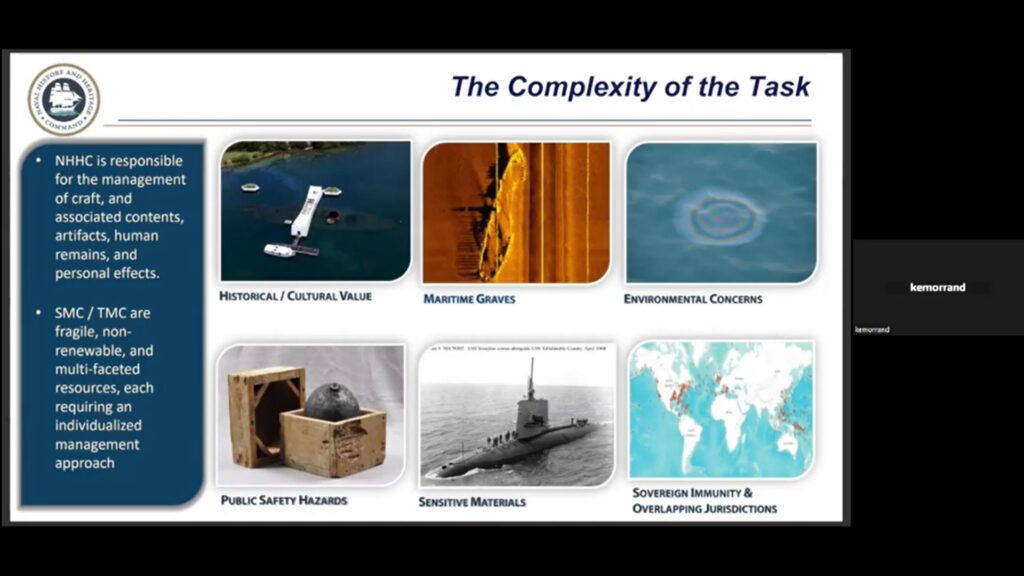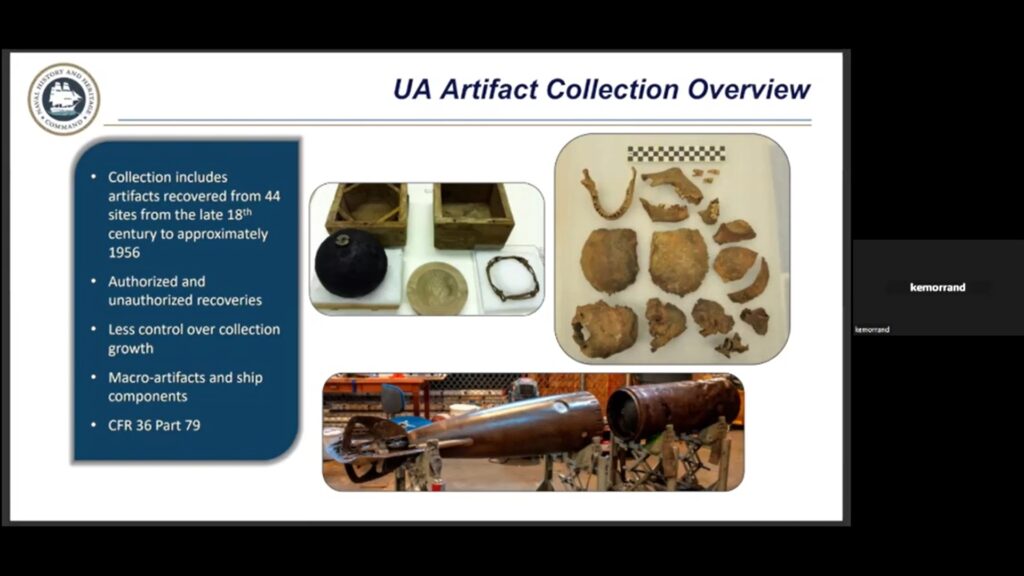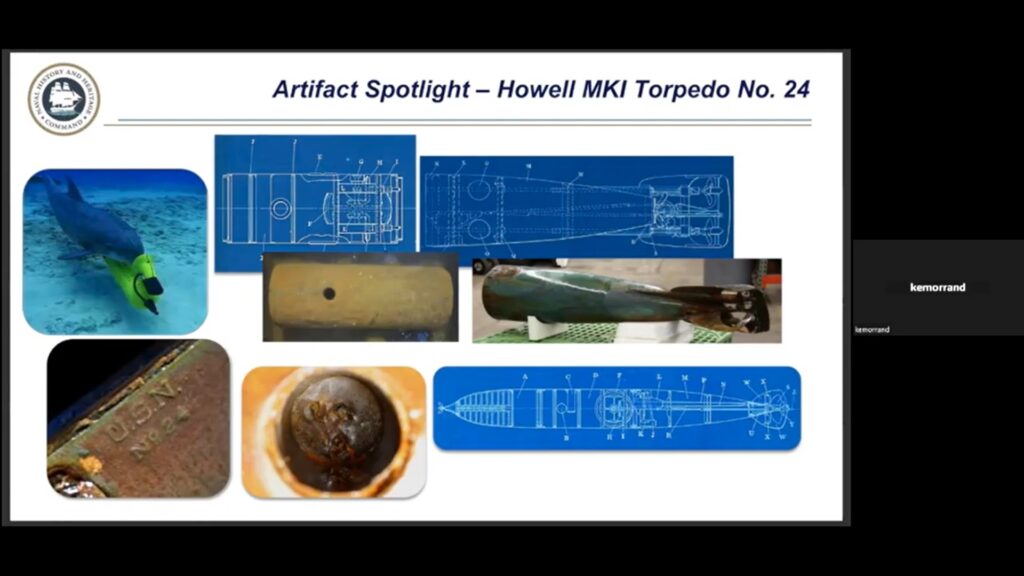“Inside the NHHC Conservation, Research, and Archaeology Lab (CORAL)” with conservators Shanna Daniels and Kate Morrand
Summarized by Lauren Gottschlich



During the November meeting, conservators Shanna Daniels and Kate Morrand presented their exciting lecture “Inside the NHHC Conservation, Research, and Archaeology Lab (CORAL).” Stationed in Washington Navy Yard, Daniels and Moran conserve artifacts as employees of the US Navy History and Heritage Command’s (NHHC) lab CORAL.
Kate began with an overview detailing that the primary objective of NHHC is to “preserve and present the story of the U.S. Navy through managing, researching, interpreting, and caring for the Department’s worldwide distribution of more than 18,000 sunken and terrestrial military craft.” As the sites are scattered around the globe, the conservation, treatment, and management of such sites is a huge undertaking. These sites date from the American revolution to the nuclear age and encompass everything from single artifacts to entire vessels. The management of these sites and their associated contents takes into consideration the possible presence of unexploded ordnance, sensitive military information, historically important artifacts, and the human remains of military personnel. Therefore, the management is multilayered and includes the conservation of the physical materials, documentation of the sites, removal of environmental hazards such as oil and fuel, the preservation of the historical/cultural significance, and the preservation of the maritime graves. Sixty percent of the sites are in US waters, but many are not. NHHC works with foreign parties to manage sites in foreign waters.
Under the purview of the Department of Defense, CORAL was founded in 1996 and is responsible for approximately 20,000 recovered artifacts. This collection has the potential to exponentially grow as more material is recovered from these sites.
One case study that Kate presented was a Howell MK1 torpedo (#24). This object was discovered off the California coast in 2013 by a team of Navy trained dolphins. After the torpedo was recovered, it was transferred to CORAL for treatment. The object was composed of aluminum, bronze, copper, and rubber. The torpedo was partially disassembled and the concretions and sediment removed. Due to the marine nature of its previous environment, desalination was necessary. The flywheel from the middle section was treated with localized electrolysis in a sodium hydroxide solution to remove soluble salts. It was then treated with tannic acid and coated in Paraloid B48N.
The lab is currently located in a temporary facility as the original building is being renovated. The entire collection is currently crated and stored in preparation to move into the refurbished building. The speakers highlighted the new lab’s features which contain an updated HVAC, dive locker, loading dock, and the capability for remote sensing.
Shanna gave a tour of the temporary space and discussed some of their current activities. The primary projects during this tour were the conservation of the materials from the 1776 ship the “Royal Savage” (alternatively named the “Grave Savage”) and materials from the 1812 site of the USS Revenge. Some of these materials will be on display in the new Navy Museum.
Want to be part of the treatment of these significant sites? Consider interning with CORAL! CORAL is proud to offer internships. Check out their website for additional details.